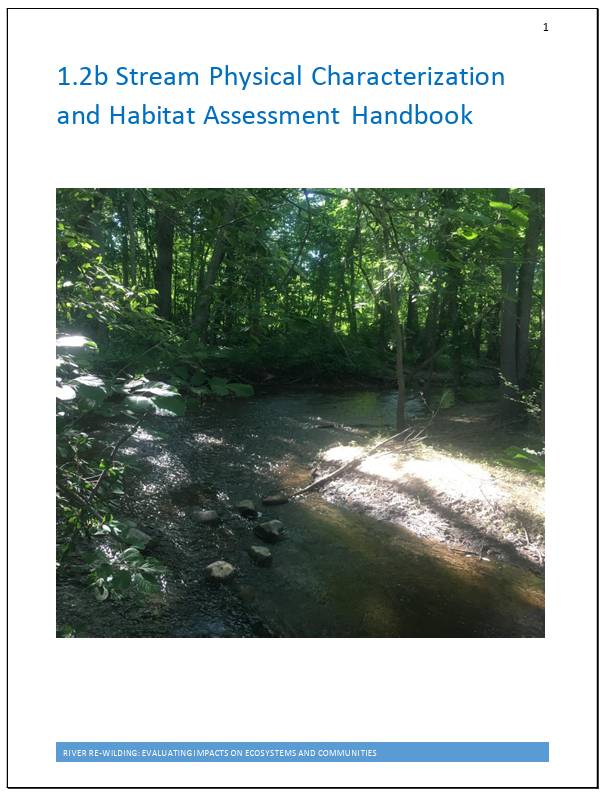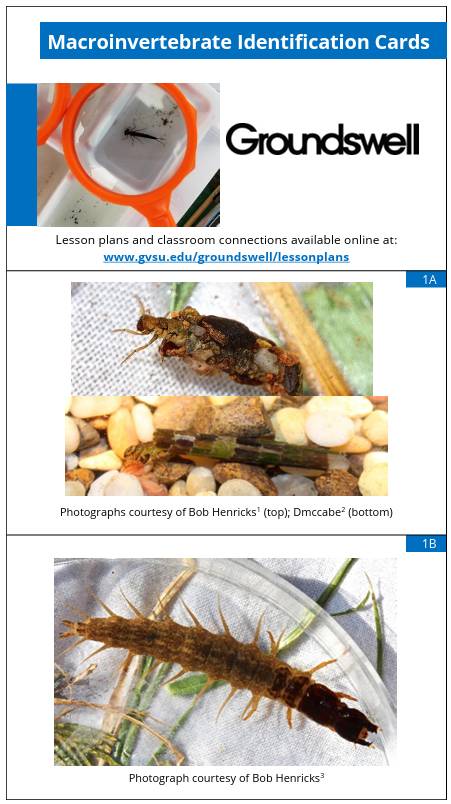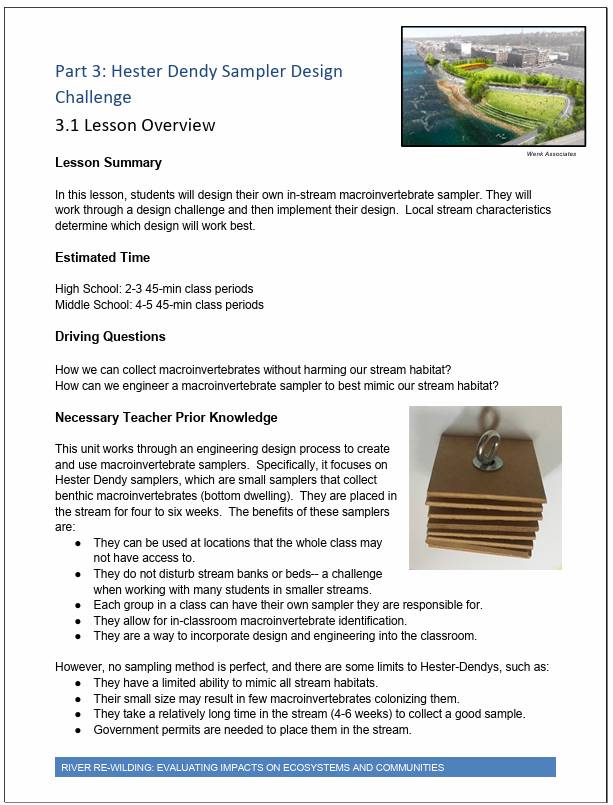River Rewilding: Advanced Water Quality
About
In this unit, students will consider what actions can be taken to reduce human impacts on local streams and improve stream quality. This Advanced Water Quality unit is packaged into three smaller parts: Part 1: Stream Habitat Assessment, Part 2: Macroinvertebrate Analysis, and Part 3: Macroinvertebrate Design Challenge.
The activities and lessons in each part have been developed to build upon one another, but they can also stand alone. Done in conjunction, students will experience analyzing and interpreting the biotic and abiotic factors in streams and designing and testing a macroinvertebrate sampler that mimics their stream’s habitat.
More About This Resource
Grade Level
- Middle School
- High School
Estimated Time
- 2-3 weeks to complete all parts for high school*
- 3-5 weeks for all parts for middle school*
* You will need an additional 4-6 week break between parts to allow for macroinvertebrate sampling.
For a full breakdown by lesson of the estimated time to complete all parts of the Advanced Water Quality Unit, use the Suggested Sequencing Table.
Essential Questions
- What do our streams' abiotic and biotic components tell us about their quality?
- What are some ways we can organize living things, and why might we want to organize living things?
- What can the macroinvertebrates living in our streams tell us about the quality of our streams?
- What can we do to improve the macroinvertebrate community in our streams and mitigate the impacts of human activity on our streams?
- How can we collect macroinvertebrates without harming our stream habitat?
- How can we engineer a macroinvertebrate sampler to mimic our stream habitat best?
Part 1: Stream Habitat Assessment
Getting to Know Your Stream
Guide students as they conduct a stream habitat survey and analyze the impacts of humans on a stream system in their local place.
Documents you will need for this activity include:
- 1.1 Stream Habitat Lesson Overview
- 1.2 Stream Habitat Lesson Sequence
- 1.2a Stream Physical Characterization Habitat Assessment
- 1.2b Stream Physical Characterization and Habitat Assessment Handbook
- 1.2c Stream Habitat Analysis Worksheet
- 1.2d How to Use ArcGIS for Land Use
- 1.2e Coldwater Stream Reading
- 1.2f Stream Physical Characterization and Habitat Assessment Google Sheet Instructions
- 1.2g River Habitat Reading
Part 2: Macroinvertebrate Analysis
Identifying Macroinvertebrates
Guide students as they analyze and create ways to organize macroinvertebrates commonly used to assess stream quality.
Documents you will need for this activity include:
- 2.1 Macroinvertebrate Card Sort Lesson Overview
- 2.2 Macroinvertebrate Card Sort Lesson Sequence
- 2.2a Macroinvertebrate ID cards (printable)
- 2.2b Indicators: Benthic Macroinvertebrates
- 2.2c Macroinvertebrate Card Sort Worksheet
- 2.3 Macroinvertebrate Stream Quality Assessment Lesson Overview
- 2.4 Macroinvertebrate Stream Quality Assessment Lesson Sequence
- 2.4a Common Macroinvertebrates Pictorial Guide
- 2.4b Preserving Macroinvertebrate Specimens
- 2.4c Macroinvertebrate Stream Quality Assessment and Analysis Worksheet
Part 3: Macroinvertebrate Design Challenge
Designing a Stream Sampler
In this lesson, students will design their own in-stream macroinvertebrate sampler. They will work through a design challenge and then implement their design. Local stream characteristics determine which design will work best.
Documents you will need for this lesson include:
- 3.1 Design Challenge Lesson Overview
- 3.2 Lesson Sequence Macroinvertebrate Sampling Design Challenge
- 3.2a What's the Problem?
- 3.2b Research Solutions
- 3.2c Evaluate Building Materials and Design Layout
- 3.2d Build a Prototype and Place in Stream
- 3.2e Evaluate Hester-Dendy and Suggest Improvements
Macroinvertebrate Identification Video
Macro ID
Learn with Groundswell high school students as they identify the macroinvertebrates from the Hester Dendy collection.
Hester Dendy Installation Video
Hester Dendy Sampler Installation
Learn how to install a Hester Dendy in a river to test for water quality. A Hester Dendy is a simple, cost-effective macroinvertebrate sampling device.



